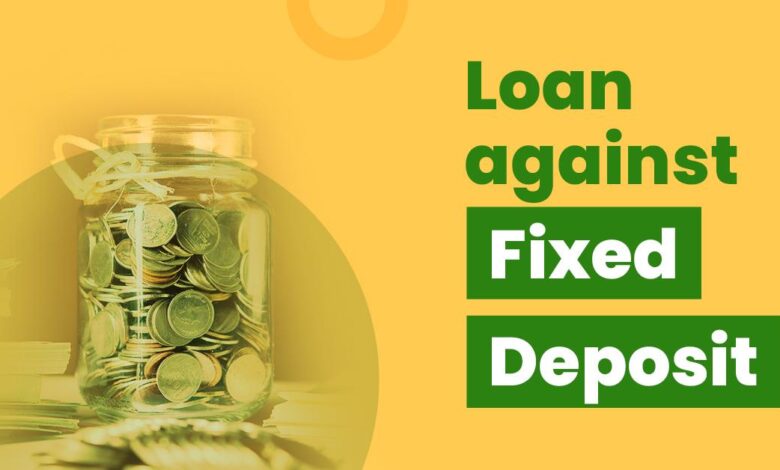Why You Should Pay Attention to Loan Against FD Interest Rates When Borrowing

In the realm of financial security and planning, fixed deposits (FDs) have long been a favored tool for many. They are reliable, provide assured returns, and are less risky compared to equity markets. However, life is unpredictable, and there might be situations when one needs immediate liquidity or funds to handle an emergency or pursue investment opportunities. This is where a loan against fixed deposits (FD) comes in. Understanding the loan against FD interest rate is crucial when you consider leveraging this option.
The Concept of Loan Against Fixed Deposit
A loan on a fixed deposit is a type of secured loan where your fixed deposit acts as collateral. Most banks and financial institutions offer this feature, as it allows you to pledge your FD against the loan amount required. This leverage gives you the advantage of not breaking the fixed deposit prematurely and continuing to earn interest on the principal amount.
What Makes Loan Against Fixed Deposits Popular?
- Ease of Access: One of the biggest advantages of a loan against fixed deposits is the ease of access. The process is straightforward and typically involves minimal documentation since the financial institution already holds your FD as security.
- Speed: Compared to other forms of loans, the disbursal process of loans against FDs is much quicker. The loan can often be approved and disbursed within a day or even a few hours, depending on the bank.
- Lower Interest Rates: Loans against fixed deposits typically come with lower interest rates compared to unsecured loans, personal loans, or credit cards. This low interest rate is a key aspect, making such loans an attractive option.
- Continued Earnings: Even though your FD is pledged as collateral, it continues to earn interest. You’re essentially using your savings to support your cash flow needs without losing out on the growth of your investment.
- Minimal Fees: There are generally fewer processing fees and service charges involved with loans against FDs compared to other loan types.
Importance of Loan Against FD Interest Rate
Interest rates play a pivotal role in any borrowing scenario, and loans against fixed deposits are no exception. The importance of understanding the loan against FD interest rate cannot be overstated, and here’s why:
- Cost of Borrowing: The interest rate determines the cost of borrowing. A lower interest rate minimizes the overall cost you’ll incur over the loan tenure. Typically, the interest rates for loans against FDs range from 1% to 2% over the FD interest rate that is being earned.
- Monthly EMI Calculations: When you borrow against an FD, the interest rate will directly affect your equated monthly installment (EMI) calculations. Understanding this helps in better financial planning and budgeting.
- Comparison of Options: With various banks offering slightly different interest rates, knowing the exact interest rate specifics lets you compare and choose the best option available.
- Impact on Savings: The core reason to borrow against an FD instead of breaking it is to continue earning interest on the FD. Therefore, the net benefit is maximized when you are fully aware of the interest interplay between the loan and the ongoing FD interest.
- Tax Implications: While loans against FDs are not tax-deductible, the interest you pay will have indirect tax implications, especially if the funds are used for business purposes. Therefore, assessing the effective interest cost after taxation becomes critical.
Factors Affecting Loan Against FD Interest Rate
Several factors can influence the interest rate when you take a loan against a fixed deposit:
- Duration of FD: The remaining tenure of your fixed deposit can influence the loan interest rate. Longer-term FDs might fetch slightly lower loan interest rates.
- Bank Policies: Different banks have specific policies, and interest rates can vary across institutions. It’s crucial to review the terms and conditions of your lending bank.
- Loan Amount: The ratio of the loan amount sanctioned to the FD amount can also affect the interest rate. Typically, banks offer loans up to 90% of the FD value.
- Credit Relationship: Existing banking relationships and credit scores might also play a role in determining the final interest rate. Customers with solid banking history might get favorable rates.
Advantages of Understanding and Comparing Loan Against FD Interest Rates
Taking the time to understand and compare interest rates has several benefits:
- Cost Efficiency: Knowing the rates helps you choose the most cost-effective borrowing option, reducing the total interest outflow over time.
- Informed Decisions: Being aware of the interest rates and their fluctuations allows you to make more informed financial decisions, improving overall financial health.
- Negotiating Power: If you are aware of the prevalent rates and have a strong banking history, you could negotiate with your bank for better terms.
- Financial Planning: When you map out the potential interest outflow and align it with your income and expenses, it leads to better financial planning and stability.
Conclusion
In financial planning and management, leveraging a loan against a fixed deposit can be a strategic move to meet urgent financial needs without disrupting your savings plan. However, giving due consideration to the loan against FD interest rate is paramount as it impacts the cost of funding and your overall financial equation. By understanding how these interest rates work and comparing between providers, you can make well-informed decisions that optimize your financial outcomes.
Ultimately, a loan against a fixed deposit provides dual benefits—securing funds while continuing to reap the benefits of your fixed deposit investment. However, the key to unlocking these benefits lies in meticulously evaluating and monitoring the associated interest rates. Stay informed, compare options, and choose wisely to make the most of this financial product.



